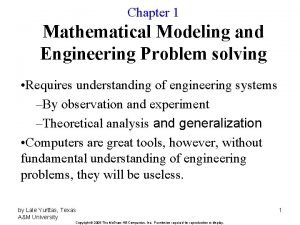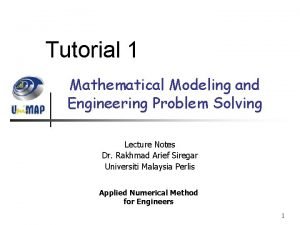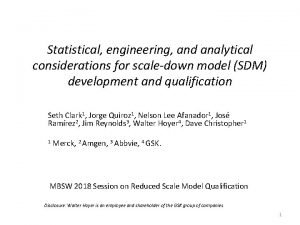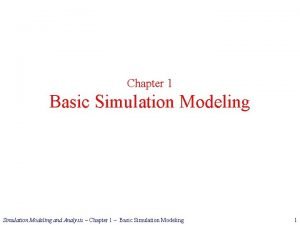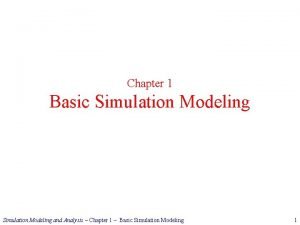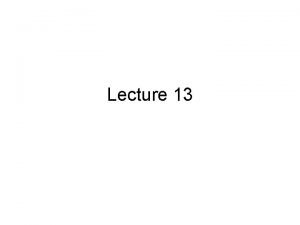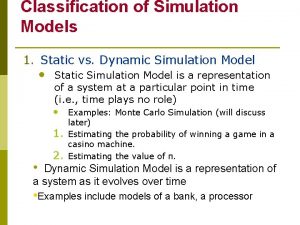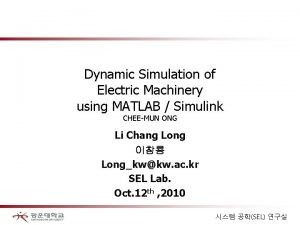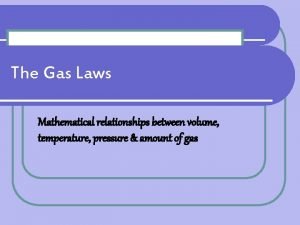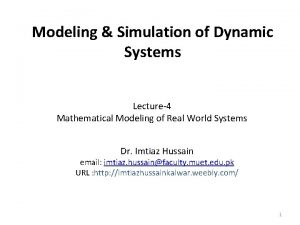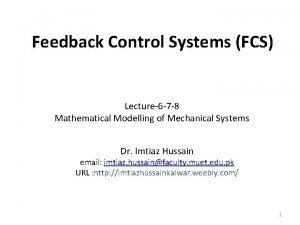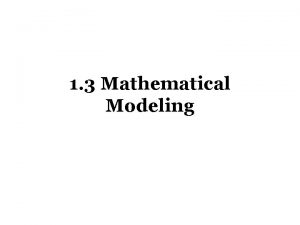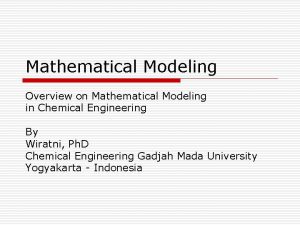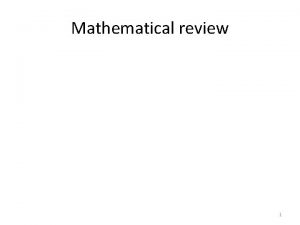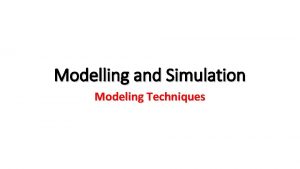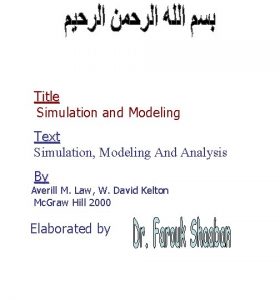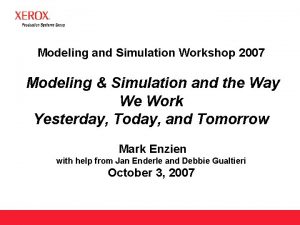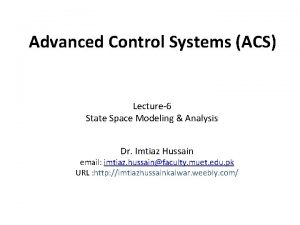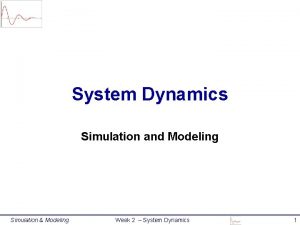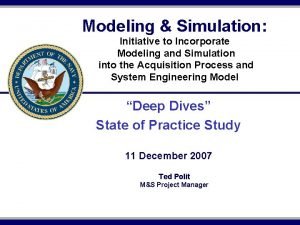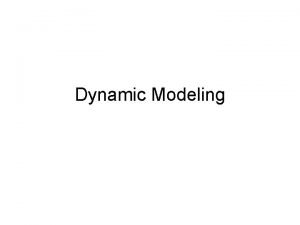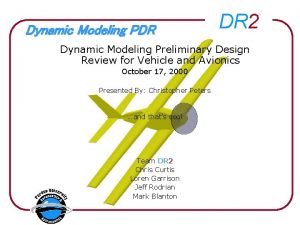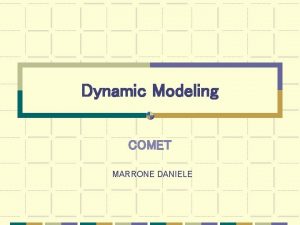Modeling and Simulation of Dynamic Lecture6 Mathematical Modeling






















- Slides: 22

Modeling and Simulation of Dynamic Lecture-6 Mathematical Modeling of Liquid Level Systems Dr. Imtiaz Hussain email: imtiaz. hussain@faculty. muet. edu. pk URL : http: //imtiazhussainkalwar. weebly. com/


Laminar vs Turbulent Flow • Laminar Flow – Flow dominated by viscosity forces is called laminar flow and is characterized by a smooth, parallel line motion of the fluid • Turbulent Flow – When inertia forces dominate, the flow is called turbulent flow and is characterized by an irregular motion of the fluid.

Resistance of Liquid-Level Systems • Consider the flow through a short pipe connecting two tanks as shown in Figure. • Where H 1 is the height (or level) of first tank, H 2 is the height of second tank, R is the resistance in flow of liquid and Q is the flow rate.

Resistance of Liquid-Level Systems • The resistance for liquid flow in such a pipe is defined as the change in the level difference necessary to cause a unit change inflow rate.

Resistance in Laminar Flow • For laminar flow, the relationship between the steady-state flow rate and steady state height at the restriction is given by: • Where Q = steady-state liquid flow rate in m/s 3 • Kl = constant in m/s 2 • and H = steady-state height in m. • The resistance Rl is

Capacitance of Liquid-Level Systems • The capacitance of a tank is defined to be the change in quantity of stored liquid necessary to cause a unity change in the height. h • Capacitance (C) is cross sectional area (A) of the tank.

Capacitance of Liquid-Level Systems h

Capacitance of Liquid-Level Systems h

Modeling Example#1

Modeling Example#1 • The rate of change in liquid stored in the tank is equal to the flow in minus flow out. (1) • The resistance R may be written as (2) • Rearranging equation (2) (3)

Modeling Example#1 (1) • Substitute qo in equation (3) • After simplifying above equation • Taking Laplace transform considering initial conditions to zero (4)

Modeling Example#1 • The transfer function can be obtained as

Modeling Example#1 • The liquid level system considered here is analogous to the electrical and mechanical systems shown below.

Modeling Example#2 • Consider the liquid level system shown in following Figure. In this system, two tanks interact. Find transfer function Q 2(s)/Q(s).

Modeling Example#2 • Tank 1 • Tank 2 Pipe 1 Pipe 2

Modeling Example#2 • Tank 1 • Tank 2 • Re-arranging above equation Pipe 1 Pipe 2

Modeling Example#2 • Taking LT of both equations considering initial conditions to zero [i. e. h 1(0)=h 2(0)=0]. (1) (2)

Modeling Example#2 (1) • From Equation (1) • Substitute the expression of H 1(s) into Equation (2), we get (2)

Modeling Example#2 • Using H 2(s) = R 2 Q 2 (s) in the above equation

Modeling Example#3 • Write down the system differential equations.

To download this lecture visit http: //imtiazhussainkalwar. weebly. com/ END OF LECTURES-6
 Mathematical modeling and engineering problem solving
Mathematical modeling and engineering problem solving Mathematical modeling and engineering problem solving
Mathematical modeling and engineering problem solving What is mathematical economics
What is mathematical economics Simulation kelton
Simulation kelton Pharmaceutical simulation and modeling
Pharmaceutical simulation and modeling Introduction to modeling and simulation
Introduction to modeling and simulation Biomedical modeling and simulation
Biomedical modeling and simulation Introduction to modeling and simulation
Introduction to modeling and simulation Modeling and simulation
Modeling and simulation Helen erickson nursing theory
Helen erickson nursing theory Mathematical modelling of mechanical systems examples
Mathematical modelling of mechanical systems examples Basic simulation modeling
Basic simulation modeling Basic simulation modeling
Basic simulation modeling Parenthesization
Parenthesization Classification of models in simulation
Classification of models in simulation Simulation
Simulation Dimensional modeling vs relational modeling
Dimensional modeling vs relational modeling Dynamic structural equation modeling
Dynamic structural equation modeling Dynamic dynamic - bloom
Dynamic dynamic - bloom What is data and process modeling
What is data and process modeling Linear and quadratic functions and modeling
Linear and quadratic functions and modeling Dfd chapter 5
Dfd chapter 5 Standard temperature and pressure
Standard temperature and pressure
